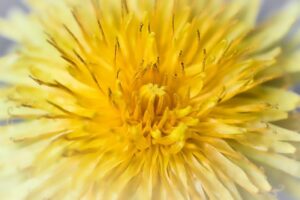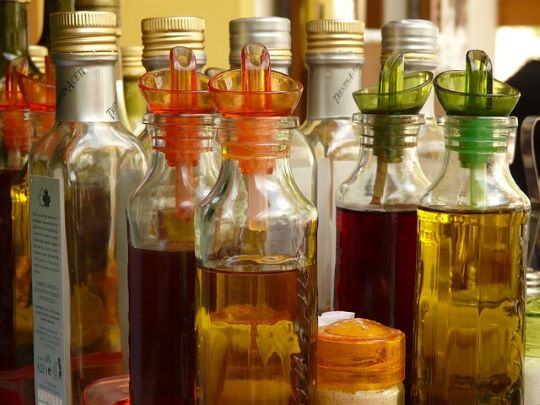
People have been making dandelion wine and vinegar across many cultures for centuries, for different reasons. In Ancient Greece, a medicinal wine was made from them, while in Medieval Europe, young dandelion leaves were used in salads and tea was brewed from its roots. Dandelions’ sweet taste is also worth enjoying in the form of homemade cordials or by adding them to dishes such as soups, stews, and salads. You will love the adaptable taste of dandelion, which will encourage you to experiment with new dishes. Dandelion wine and vinegar are still well-liked due to their health benefits. Dandelion root is an effective antioxidant and anti-inflammatory agent that supports the liver, enhances digestion, and boosts immunity. The leaves of dandelions contain numerous vitamins and minerals. Dandelions may also be made into vinegar, which can be utilized as a condiment or mixed into dressings, sauces, and marinades. This vinegar can help you detoxify your body naturally and increase your energy levels. Dandelion wine can be enjoyed for its antioxidants and subtle sweetness, or as a luxurious after-dinner treat. It adds a distinct flavor to your favorite dishes, whether you use it as wine or vinegar.
Dandelion Vinegar

The next time you see a patch of dandelions growing in your garden or in a park, don’t snub them – gather the petals and make delicious and healthy dandelion vinegar! Enjoy! It’s easy to make homemade dandelion vinegar from foraged flowers. To start, pick freshly-bloomed dandelion petals on a dry day. The leaves can be used as well but are more bitter. Make sure you’re far away from any sources of pollution. Roadsides would not be a good place as they are often sprayed with herbicides. Find an open field, the wilder the better or even your own yard if you know you use no chemicals.
Once you have your flower, gently rinse the petals to remove dirt and debris, then pat them dry with a clean towel. Next, place the petals in a sterilized jar and fill it with high-quality vinegar like apple cider or white vinegar. A mason jar with an airtight lid is ideal, but you can also use a specialized earthenware jar for fermenting or even just a clean stone!
Allow the flavors of the dandelion to infuse into the vinegar by storing the jar in a cool and dark place for two to four weeks. After that, strain out the vinegar from foraged flowers. To do this, place a fine mesh strainer over another container and pour the vinegar in. You may need to use two layers of cheesecloth to filter out any excess petals or other particles. Then transfer the infused vinegar into sterilized jars or bottles. Label the containers with the type of vinegar used and date it for future reference.
Besides being a tasty addition to salad dressings, dandelion vinegar is chock-full of health benefits. Dandelions are a rich source of vitamins A and C, potassium, zinc, magnesium, iron, and calcium so you’ll be getting these nutrients every time you take a sip. Plus the antioxidants in dandelion vinegar can help protect your cells from free radical damage and promote healthy digestion. You can even use as a hair rinse and used on your face it fight acne.
Dandelion vinegar is easy to make and with its unique flavor and health-promoting qualities, this simple recipe is good to have on hand.
Dandelion Wine
Making dandelion wine is more of an art form than a science, but it’s easier than you might think!
First, start by picking the freshest dandelions in your yard or local park. Make sure that they haven’t been sprayed with any chemicals or otherwise contaminated. Once you gather your dandelions, carefully remove the petals from the flowerheads and discard any green parts or seeds. You should have about 4 cups of dandelion petals after this step.
In a large bowl, combine 4 cups of the dandelion petals with 2 quarts of boiling water. Let this mixture sit overnight to cool and steep. The following day, strain your dandelion mixture through a cheesecloth or strainer into a large saucepan. Add 4 more quarts of water and 3 pounds of white sugar.
Heat the mixture over medium heat, stirring often until the sugar has dissolved. Bring this mixture to a light boil and then reduce the heat to low. Simmer for 45 minutes, skimming off any foam that rises to the surface. After 45 minutes, take your saucepan off of the burner and let it cool overnight.
The following day, pour your cooled dandelion solution into a clean glass fermenting jar. Add 1 teaspoon of wine yeast and attach an airlock to the mouth of the jar (an airlock is used to let carbon dioxide escape but keep oxygen out). Store your jar in a dark, cool place and let it sit for about 2 weeks – you’ll know that fermentation is complete when the airlock stops bubbling.
Once fermentation is complete, remove the airlock and use a siphon tube to transfer your dandelion wine from the fermenting jar into clean, clear bottles with tightly fitting lids. Seal these bottles and store in a cool place for at least 6 weeks before enjoying!
Dandelion wine has a distinctive floral flavor that can be enjoyed on its own or paired with different types of food, desserts, or cheeses. Keep in mind that winemaking involves a fermentation process, so it’s important to have the right knowledge and techniques. To ensure success, it’s best to follow a trustworthy recipe or consult with experienced winemakers.
When it’s time to uncork your dandelion wine, you’ll be rewarded for all your hard work with a delicious beverage full of sunny flavor. Enjoy!
To learn more about fermenting check out my article here.
